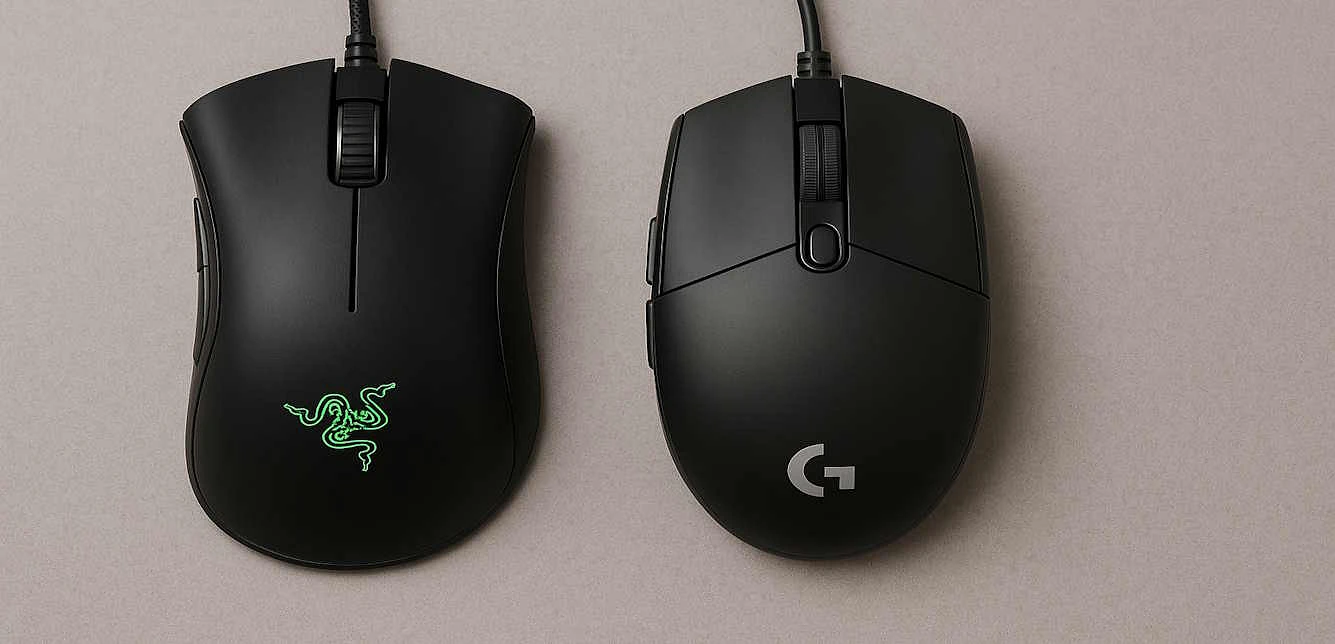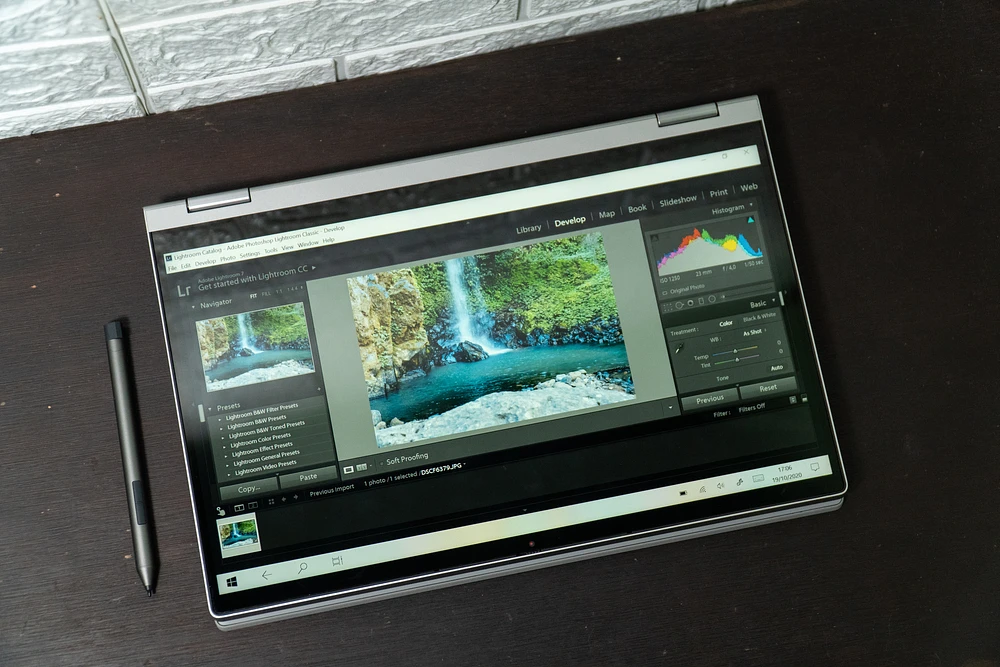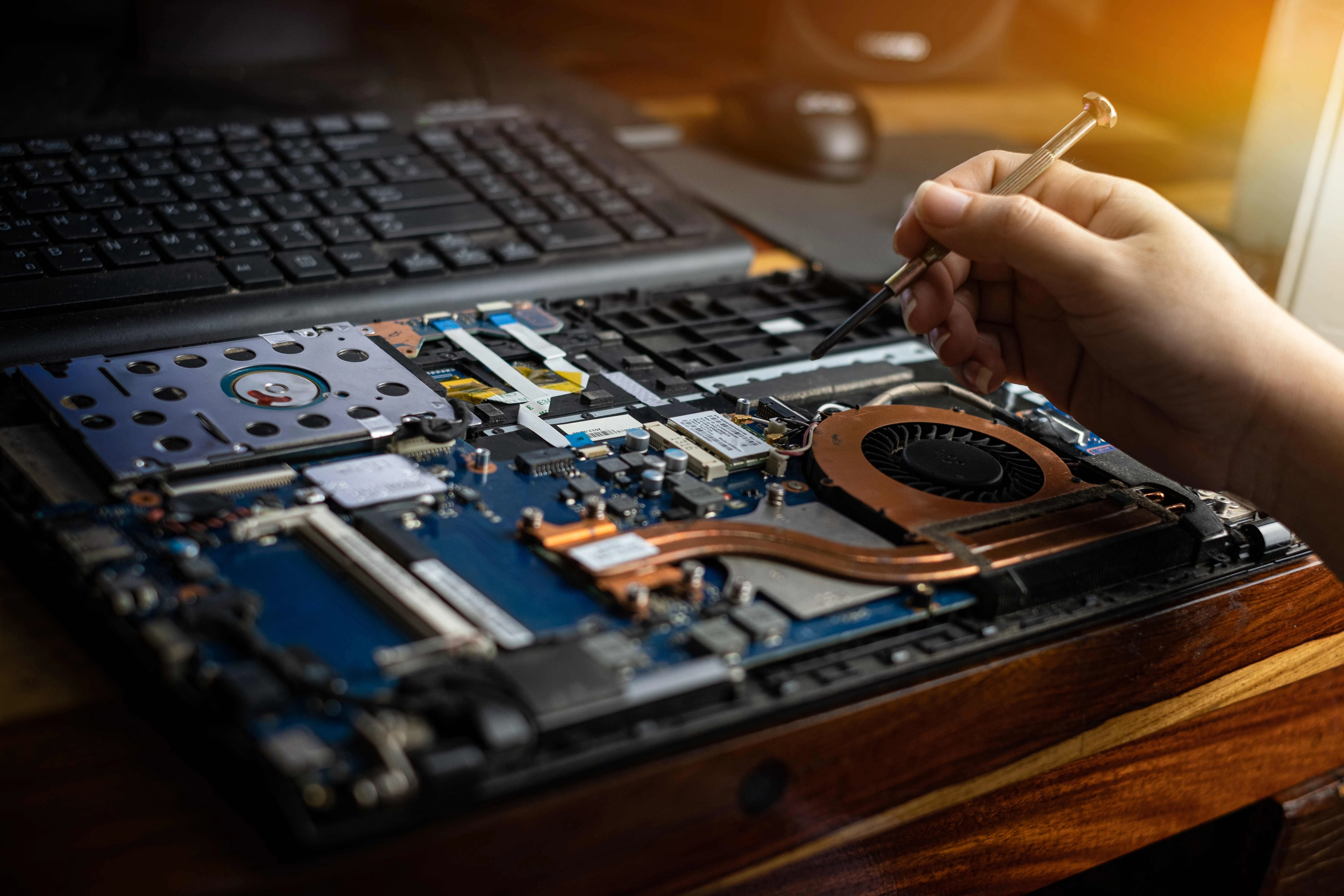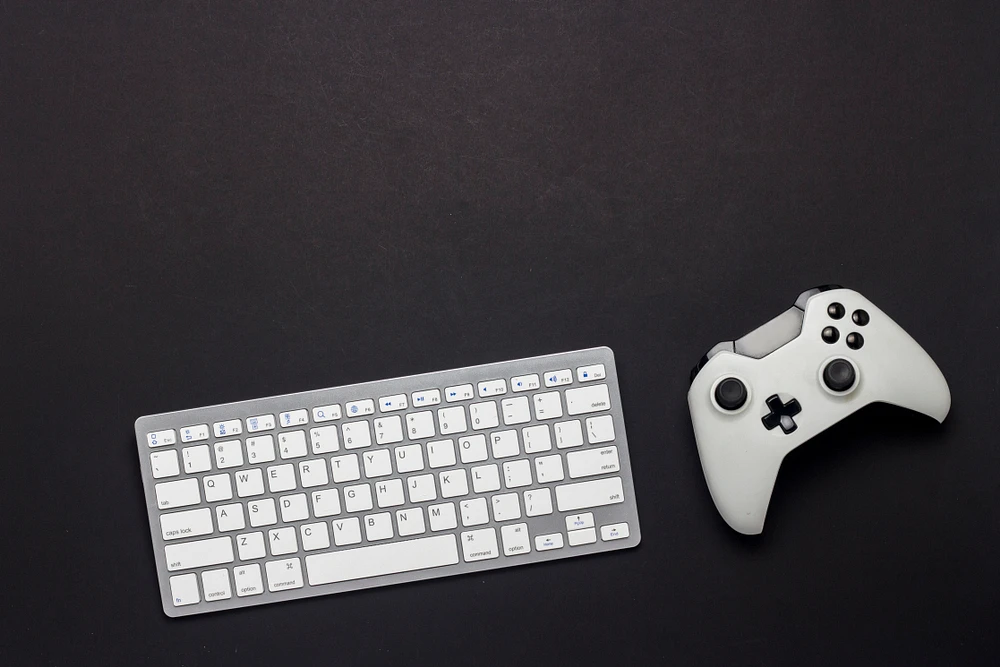TL;DR
|
Feature |
DeathAdder Essential |
Logitech G203 |
|
Price (2025) |
$25-35 |
$16-25 |
|
Weight |
96g |
85g |
|
Sensor |
PAW3327 |
Logitech Gaming-Grade |
|
Best For |
Large hands/palm grip |
Small hands/fingertip grip |
|
FPS Gaming |
Good tracking stability |
Superior for flick shots |
|
Ergonomics |
Right-handed only |
Ambidextrous |
|
Longevity |
Mixed reviews |
Excellent durability |
Winner by Use Case:
-
FPS Gaming: G203 (lower latency, lighter weight)
-
Ergonomics: DeathAdder Essential (palm grip comfort)
-
Value: G203 (often under $20)
Budget Gaming Mouse Options in 2025
You don't need a huge pile of cash for a good gaming setup. For years, two names keep popping up when people talk value: Razer's DeathAdder Essential and Logitech's G203. Even now in 2025, they're solid choices that perform well without high costs.
These mice are perfect for casual players, students, or anyone wanting a capable budget gaming mouse under $35. Sure, top-tier models brag about super-high polling rates and ultra-low latency. But honestly? Most folks won't spot the difference when they're actually playing.
Don't worry, tight budget constraints don't force you into junk. Both options give you snappy sensors, buttons you can program, and build quality that often embarrasses pricier mice.
Design & Ergonomics
DeathAdder Essential: The Ergonomic Titan
Razer designed this mouse for comfort-first gaming. Its right-handed shape measures 127mm in length, making it ideal for palm and claw grip users. The pronounced hump supports your hand naturally during extended sessions.
The matte finish feels premium but shows fingerprints easily. Unfortunately, Razer opted for a basic rubber cable instead of braided - a cost-cutting measure that shows. Cable drag becomes noticeable during fast movements.
G203: The Ambidextrous All-Rounder
Logitech took a different approach with symmetrical design. At 116.6mm length, it accommodates various grip styles without favoring either hand. This versatility comes at zero ergonomic cost.
RGB lighting adds personality through its logo and three-strip band design. Colors are vibrant and customizable, unlike DeathAdder's green-only LED. Build quality feels solid throughout, though the cable remains somewhat stiff.
Hand Size Compatibility
DeathAdder Essential works best for medium to large hands only. Small-handed users will struggle reaching buttons comfortably. Its size becomes a limitation rather than benefit for many.
G203 offers universal appeal through its compact footprint. Fingertip grip works for any hand size, while small hands can palm grip comfortably. This flexibility makes it a safer blind purchase.
Technical Performance Breakdown
Sensor & Accuracy
DeathAdder sports PixArt's PAW3327 sensor with 100-6,400 DPI range and 220 IPS tracking speed. It's accurate and consistent, though not cutting-edge. Performance remains solid across all sensitivity levels.
G203 uses Logitech's proprietary sensor offering 200-8,000 DPI with 50-DPI adjustment steps. This precision lets you dial in exact sensitivity preferences. Mouse DPI settings feel more granular than competitors.
Latency & Responsiveness
Click latency measurements reveal significant differences. G203 achieves 3.8ms response time, making it superior for competitive scenarios where milliseconds matter. Fast-paced games benefit from this responsiveness.
DeathAdder Essential clocks 5.5ms click latency. While still acceptable, it lags behind G203's snappy feel. Casual players won't notice, but competitive gamers might prefer faster alternatives.
Build Quality & Durability
Both mice feature 10-million click Omron switches rated for years of heavy use. Switch quality feels consistent between models, with satisfying tactile feedback.
DeathAdder Essential suffers from occasional sensor rattle issues. This hardware quirk affects some units but remains fixable through simple modifications. Quality control seems inconsistent.
G203 maintains sturdy construction throughout its lifespan. User reports consistently praise its durability over 6+ years of daily gaming. Cable stiffness remains its only notable weakness.
Gaming Performance Comparison
FPS Gaming (Battlefield 6, CS2)
G203 excels in first-person shooters through lower latency and reduced weight. Quick flick shots feel more responsive, while tracking remains accurate during rapid movements. Its compact size suits FPS mouse requirements perfectly.
DeathAdder offers superior tracking stability but higher lift-off distance (~2.5mm). Palm grip users appreciate its stability during precision aiming, though weight becomes noticeable during extended sessions.
RPG/MMO Gaming (Path of Exile 2, Last Epoch)
Both mice support 5-6 programmable buttons for complex keybinds. DeathAdder's Hypershift function doubles available commands, while G203's G-Shift provides similar secondary layers.
Comfort becomes crucial during marathon gaming sessions. DeathAdder's ergonomic gaming mouse design reduces hand fatigue significantly compared to G203's smaller profile.
Software & Customization
DeathAdder Essential uses Razer Synapse across Windows, macOS, and Linux platforms. Software feels mature and responsive, though it requires constant internet connection for full functionality.
G203 relies on Logitech G Hub for Windows and macOS users. Linux support remains limited but functional. Interface design feels more modern than Synapse.
Lighting options differ dramatically. DeathAdder offers green-only illumination, while G203 provides full RGB customization across multiple zones. Personalization options clearly favor Logitech's approach.
Longevity & Real-World Use
G203 consistently receives praise for exceptional durability in gaming forums. Users report 6+ years of daily use without hardware failures. This longevity makes it exceptional value gaming gear despite budget pricing.
DeathAdder Essential shows more quality control inconsistencies. Sensor rattle affects some units, though fixes exist. Build quality feels less consistent than G203's reliable construction.
Value Verdict: Which Should You Buy?
Choose DeathAdder Essential if:
-
You have medium to large hands
-
Palm grip feels most comfortable
-
Ergonomic support matters more than features
-
You game on Linux regularly
Choose G203 if:
-
You prefer fingertip or claw grip
-
Competitive gaming requires low latency
-
RGB lighting appeals to you
-
Budget constraints are primary concern
G203 often drops below $20 during 2025 sales, making it incredible value. DeathAdder typically costs $25-35, but offers superior ergonomics for compatible users.
FAQ – Frequently Asked Questions
Is the Logitech G203 still good in 2025?
Absolutely. Its sensor performance, click latency, and pricing ($16-25) make it a top budget recommendation. Age hasn't diminished its competitive edge against newer models.
Can the DeathAdder Essential handle competitive FPS?
It performs adequately but falls behind ultra-light mice in weight (96g) and latency metrics. Casual competitive play works fine, but serious esports might require faster alternatives.
Which mouse is better for small hands?
G203's 116mm length suits small hands perfectly. DeathAdder's 127mm length becomes unwieldy for users with shorter fingers or smaller palms.
Do these mice work on Mac/Linux?
DeathAdder Essential offers full Synapse support on macOS and Linux systems. G203 works on macOS through G Hub but has limited Linux customization options.
How many programmable buttons do they offer?
Both provide 5-6 programmable buttons plus secondary command layers (Hypershift/G-Shift). Button count matches more expensive gaming mice.
Which has better warranty coverage?
Both manufacturers include standard 2-year warranties covering manufacturing defects and hardware failures.
This gaming mouse comparison reveals two distinct philosophies. DeathAdder prioritizes ergonomic comfort for extended sessions, while G203 emphasizes versatility and competitive performance. Both represent excellent, affordable gaming mice that punch above their weight class, proving that budget gaming doesn't require sacrificing quality or features.








